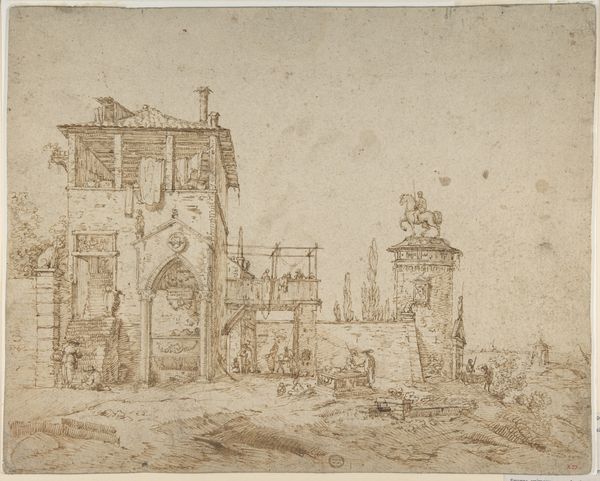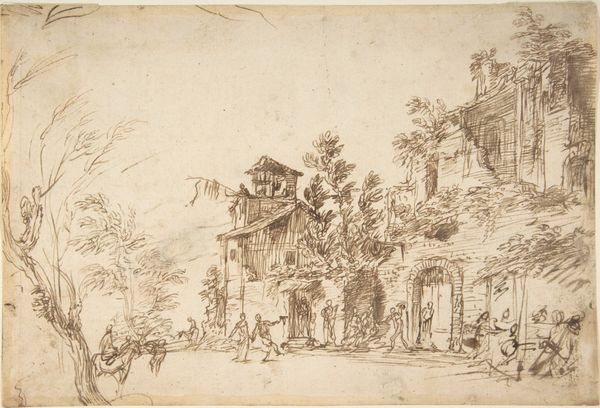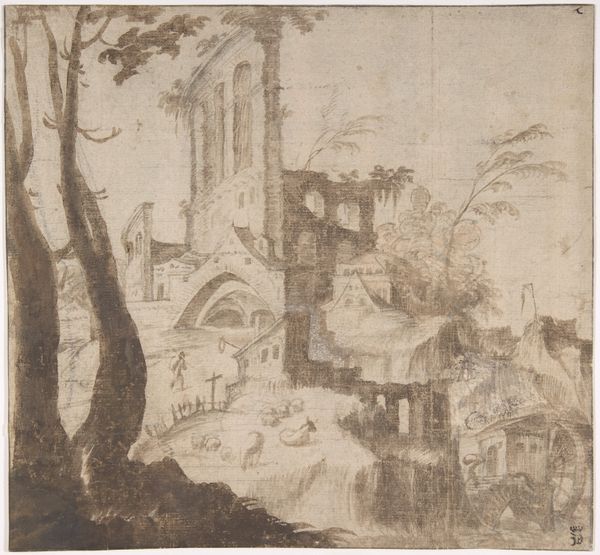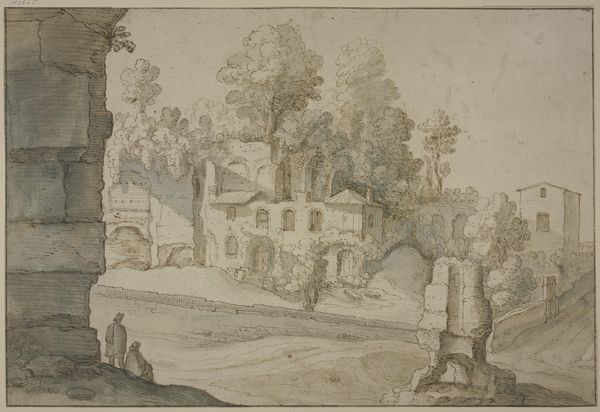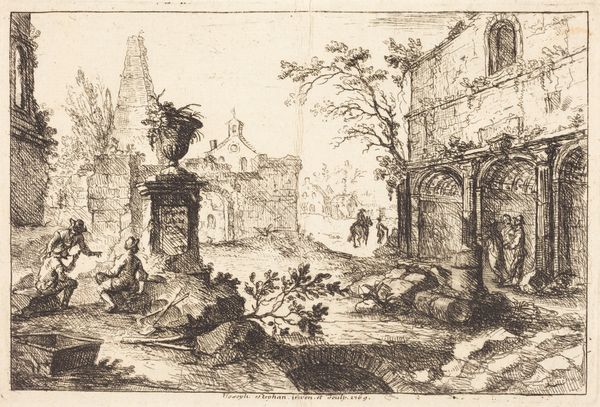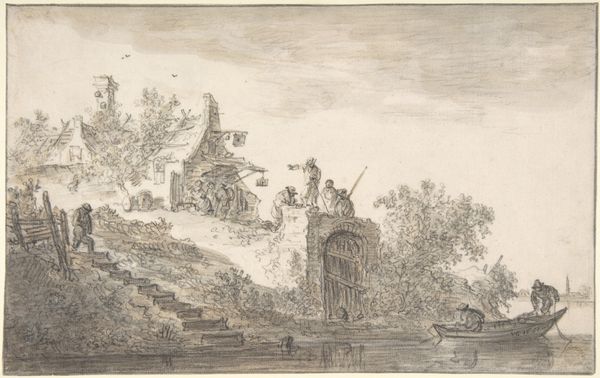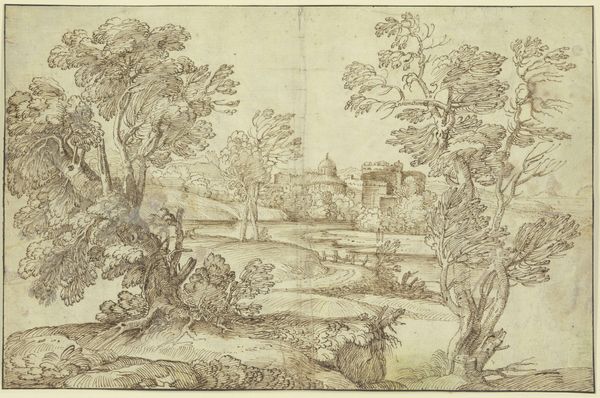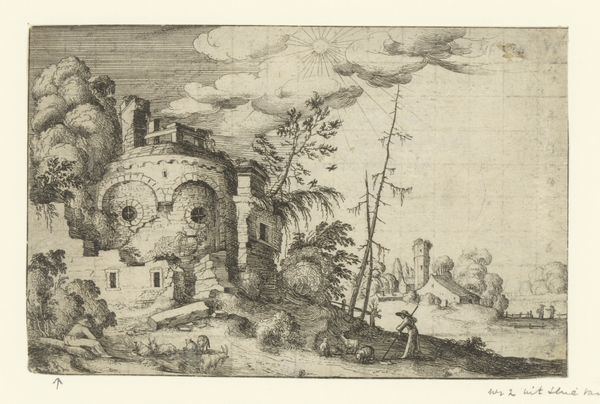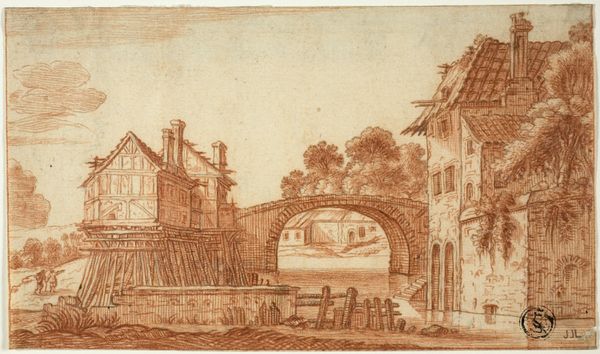
An Inhabited Ruin on the Bank of a River 1630 - 1640
0:00
0:00
drawing, print, etching
#
drawing
#
dutch-golden-age
# print
#
etching
#
landscape
Dimensions: Sheet: 7 1/2 × 11 7/8 in. (19 × 30.2 cm)
Copyright: Public Domain
This drawing of an inhabited ruin on a riverbank was created by Jan van de Velde II in the 17th century. The prominent motif of a decaying structure, interwoven with nature, speaks volumes. Ruins, in this period, often symbolized the transience of earthly achievements and the inevitable decay of human endeavor. Notice the gnarled, barren tree beside the building; the tree is a powerful symbol of mortality and decay. In classical antiquity, trees were sacred, embodying life and wisdom. However, here, its withered form reflects the ruin's state, a memento mori inviting reflection on the ephemeral nature of existence. The ruin, while crumbling, is still inhabited, suggesting a poignant continuity. The image evokes a deep, subconscious recognition of decay and continuity. This powerful emotional resonance—the sadness of decline coupled with the resilience of life—captures our attention on a profound level. Motifs such as these resurface throughout art history, evolving in appearance but retaining their ability to elicit fundamental human emotions tied to memory and time.
Comments
No comments
Be the first to comment and join the conversation on the ultimate creative platform.
